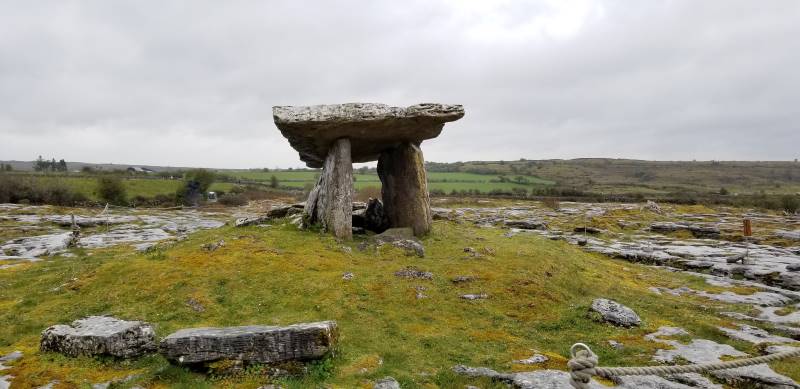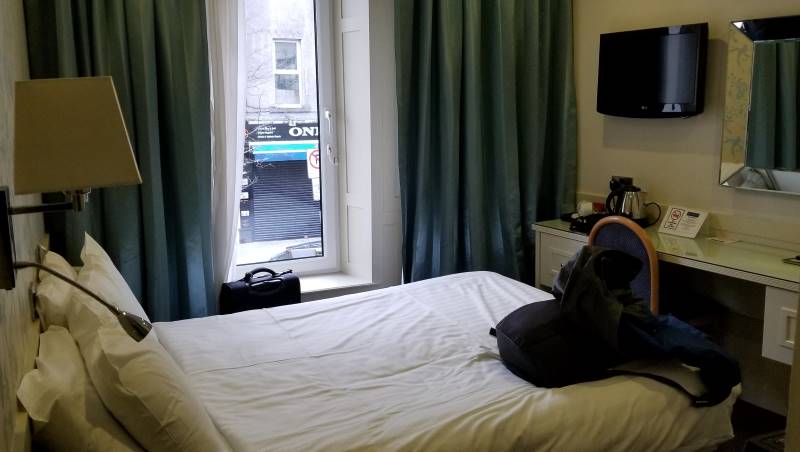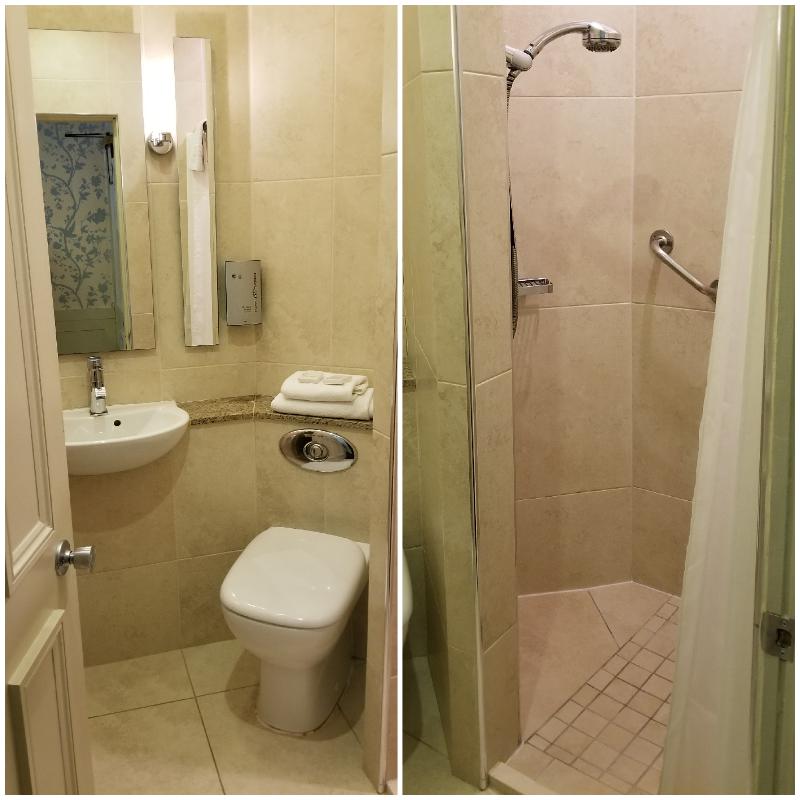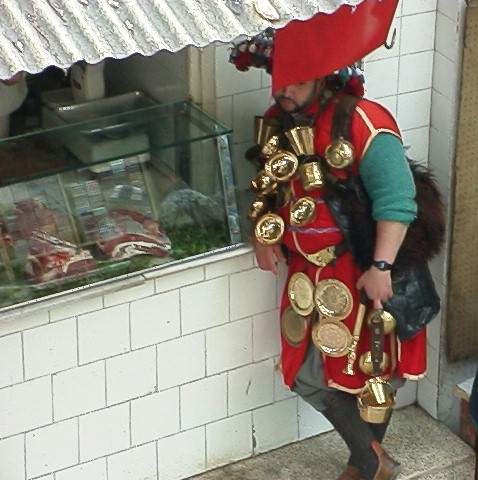
How We Visited 2 Major Prehistoric Sites in Ireland in 1 Day
How did we end up seeing two major prehistoric sites in Ireland on opposite sides of the country in one day? Luck and planning.
I confess a fascination with prehistoric places in general. So when I discovered that there were Megalithic sites in Ireland that were older than the Egyptian pyramids, I knew seeing them had to be a priority. Over decades of travel, I’ve managed to see many different standing stones in Scotland, the amazing Stonehenge in England, cave dwellings in France and in Italy, as well as the Egyptian pyramids and other ancient sites all over the world.
The primary goal was to see Newgrange, an ancient burial site that’s over 5000 years old. Located north of Dublin near the town of Drogheda, it was a bit out of the way for the rest of our itinerary, but we decided it was worth the detour. The other site, Poulnabrone, is located in an area called the Burren and happened to be close to our final destination on the same day, Doolin (which also happened to be on the opposite side of the country!).

Table of Contents
Prehistoric Sites in Ireland
Newgrange / Brú na Bóinne

The site of Newgrange is a burial mound, also known as a passage grave, and it’s estimated to be older than both the pyramids in Egypt and Stonehenge in England. It’s absolutely massive, almost 300 feet in diameter and 36 feet high at its peak. The inside chamber is filled with decorative art which has survived to this day. It’s almost impossible to grasp the scale in the photo above, but if you look at the small figures on the right side of the mound, those are people at the entrance.
Newgrange is located in the Boyne Valley and combined with two other similar burial mount sites, Knowth and Dowth, they make up one of only two UNESCO World Heritage Sites in Ireland (the other being the island of Sceilg Mhichíl (yes, where one of the Star Wars movies was filmed).

One of the most impressive features is the direct alignment of the entranceway with the interior of the burial chamber. Somehow, 5000 years ago, they managed to situate the site so that on the winter solstice, December 21st every year, the rays of the sun penetrate the passageway to the depths of the chamber and illuminate it for 15 minutes.

No photography is allowed inside. Our group was brought inside by a guide. The entrance and passageway were surprisingly narrow and led to a small chamber with various burial nooks and niches arranged in a circle. There was decoration carved into the stone and some coloration still visible. While outside, the wind was howling and rain was coming down, inside was cozy and dry (especially with the body heat of 25 people).
How to Visit Newgrange
In the past, it was possible to purchase advanced tickets online before going to the site. When we visited, this wasn’t possible, so we decided to show up at the opening time to ensure we were able to buy tickets. The visitor’s center was closed when we were there due to renovations and we purchased our tickets from a shed in the parking lot. From there we waited in line for the shuttle bus to take us over to the Newgrange site (you are not allowed to drive to it yourself). Once at the site, as a group we were walked up to the entrance and only allowed inside with the tour guide.

Here’s a great National Geographic short (2 minute) video about the history of Newgrange.
This is the official Heritage Ireland website for Newgrange where you can see the opening times, book advance tickets, etc. Our admission fees to Newgrange were covered by our Ireland Heritage card, which you can read about here.
Where To Stay Near Newgrange
You can certainly see Newgrange as a day tour from Dublin. Because we wanted to get an early start, we decided to stay in the nearby town of Drogheda at the Westcourt Hotel. We arrived in the early evening, driving directly from Dublin Airport, after a long flight from Los Angeles. The room was small, but perfectly fine for one night and overlooked the street below (we could see St. Peter’s Parish Church from our window).
Because we were planning on leaving early the next morning, we didn’t have time for more than a cursory walk around town on the evening we arrived. It was a Sunday and we were exhausted, so we ended up eating in the restaurant in the hotel, which was fine.

The Burren
The Burren is important from both a prehistoric and geologic standpoint. It is the largest karst formation area in Western Europe and covers over 300 square kilometers. Instead of the tall limestone karsts you may have seen in China or Thailand, these present as cracks and crevices in the ground. The area is also important to botanists as both Alpine and Mediterranean plants grow here including orchids, mosses and ferns.

Poulnabrone
The site of Poulnabrone dates back over 5000 years and what can be seen by visitors is the burial chamber’s lintel. Unlike Newgrange, it is free to the public to visit, however, it’s roped off so you cannot walk through the structure, only see it from afar. There are marked pathways and lots of informational signage so you can do a self-tour, even in the bad weather, as we did.

The entrance to the tomb is made of giant limestone slabs and archaeologists found the remains of more than 30 people at the site. The bones were discovered in 1985 and are estimated to be between 5300 and 5800 years old. They may have been moved here at some point because the bones were found in the “grikes” (crevices) in the limestone “pavement”. The limestone was once at the bottom of a warm sea, over 320 million years ago, and sealife fossils have been found there. Millions of years of water and weather have worn away the limestone and formed the crevices (see the crevices/grikes in the photo below).

In the end, it was a long but fascinating day. Seeing these ancient structures is a bit like traveling back in time. There are many other prehistoric sites in Ireland; Drombeg Stone Circle, the Hill of Tara, and Carrowmore among them, and I can’t wait to return to see more.
Have you seen any of these Prehistoric sites in Ireland? Do you want to? Leave me a comment below and let me know what you think!
PIN THE IMAGE BELOW TO SAVE FOR LATER

For more posts on Ireland, make sure to check out the Ireland Destination Page.
NOTE: Everything on this trip was paid for by us. Nothing was complimentary or given in exchange for reviews or promotions.
Any post on this site may contain affiliate links. Thank you for supporting wired2theworld by using our links to shop, book hotels, or organize tours. If you use them, they cost you nothing extra but we may make a small commission that helps us to continue to provide helpful and free content. This specific post has no affiliate links.
Booking.com




3 Comments
Linda (LD Holland)
That is a long day trip for one day! But great to chase your passion for prehistoric places. The prehistoric carvings look interesting. Always fascinating to see stone structures and wonder about their meanings. Certainly a trip back through time.
thesanetravel
Both sites Newgrange and Poulnabrone looks impressive! Places like that are triggering thoughts in me about lives of people so many years ago. Thanks for useful information!
John Smith
This post is a great guide for history lovers! I love how you managed to visit both Newgrange and the Hill of Tara in one day. The detailed directions and timing tips are so useful. Definitely bookmarking this for my future trip to Ireland. Thanks for sharing!